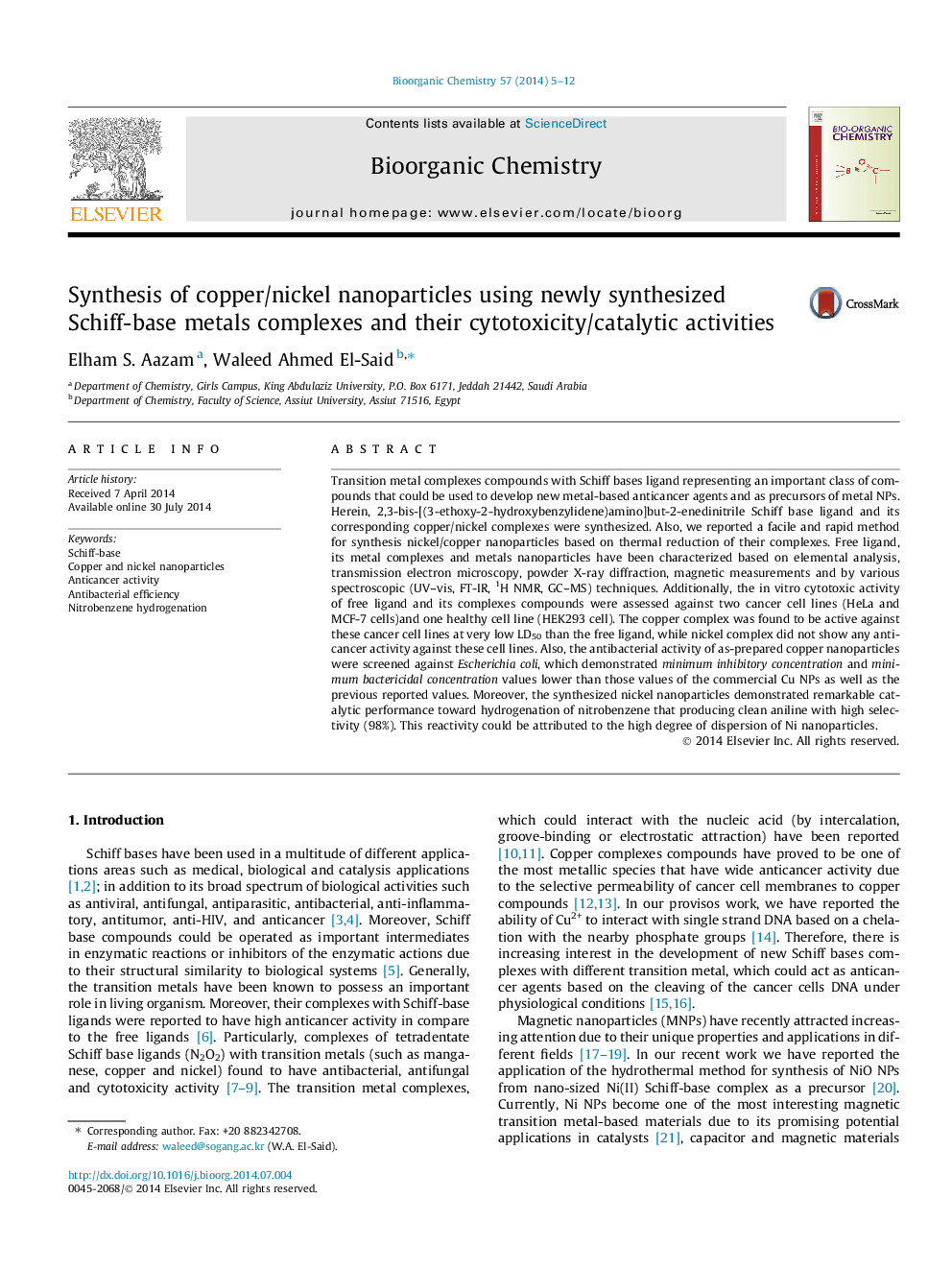| کد مقاله | کد نشریه | سال انتشار | مقاله انگلیسی | نسخه تمام متن |
|---|---|---|---|---|
| 1355904 | 1500457 | 2014 | 8 صفحه PDF | دانلود رایگان |
• Schiff-base ligand and its metal complexes compounds were synthesized.
• Thermal reduction of Schiff-metal complexes was used to fabricate pure metal NPs.
• Cytotoxicity of free ligand and its complexes were screened against two cancer cells.
• The synthesized Ni nanoparticles have been used for hydrogenation of nitrobenzene.
• These Ni nanoparticles have been produce clean aniline under mild conditions.
Transition metal complexes compounds with Schiff bases ligand representing an important class of compounds that could be used to develop new metal-based anticancer agents and as precursors of metal NPs. Herein, 2,3-bis-[(3-ethoxy-2-hydroxybenzylidene)amino]but-2-enedinitrile Schiff base ligand and its corresponding copper/nickel complexes were synthesized. Also, we reported a facile and rapid method for synthesis nickel/copper nanoparticles based on thermal reduction of their complexes. Free ligand, its metal complexes and metals nanoparticles have been characterized based on elemental analysis, transmission electron microscopy, powder X-ray diffraction, magnetic measurements and by various spectroscopic (UV–vis, FT-IR, 1H NMR, GC–MS) techniques. Additionally, the in vitro cytotoxic activity of free ligand and its complexes compounds were assessed against two cancer cell lines (HeLa and MCF-7 cells)and one healthy cell line (HEK293 cell). The copper complex was found to be active against these cancer cell lines at very low LD50 than the free ligand, while nickel complex did not show any anticancer activity against these cell lines. Also, the antibacterial activity of as-prepared copper nanoparticles were screened against Escherichia coli, which demonstrated minimum inhibitory concentration and minimum bactericidal concentration values lower than those values of the commercial Cu NPs as well as the previous reported values. Moreover, the synthesized nickel nanoparticles demonstrated remarkable catalytic performance toward hydrogenation of nitrobenzene that producing clean aniline with high selectivity (98%). This reactivity could be attributed to the high degree of dispersion of Ni nanoparticles.
Figure optionsDownload as PowerPoint slide
Journal: Bioorganic Chemistry - Volume 57, December 2014, Pages 5–12
